There’s never been a better time to train indoors. The arrival of smart and direct-drive turbo trainers in the last decade has helped to transform the realism of riding inside on a stationary bike. But it’s the various training platforms on offer that have truly brought turbo training into the 21st century.
Virtual worlds, e-racing and pro-level training plans that adapt after each session are now just a monthly subscription away, and the features on offer are being added to and improved all the time.
While there are dozens of indoor cycling apps to choose from, which is best for your virtual riding requirements?
We put the three biggest – Zwift, Wahoo X and TrainerRoad – through their paces to dissect the pros and cons of each, spending two weeks on each platform to get to grips with their key features.
All three have their own unique selling points but, in a crowded market, there is plenty of a crossover to make them ripe for comparison and, ultimately, help you decide which is worth your hard-earned money.

First, an overview
Before we get started on a comparison of Zwift vs Wahoo X vs TrainerRoad, let’s start with an overview of each platform.
Zwift
Even if you’re completely new to indoor cycling, there’s a good chance you’ll have heard of Zwift. The training platform goes big on its social side and has thousands of members all over the world, who you’ll find riding around its 11 different virtual worlds at all hours of the day.
If you have the right equipment (see ‘Platforms’ for the minimum requirements), you can use your efforts on a turbo trainer to pedal an avatar of yourself around Zwift’s more than 1,000km of roads.
Upgrade to one of the best smart trainers on the market and Zwift will, in turn, up the immersion and be able to simulate climbs, descents and even the aerodynamic benefits of riding in a group, by automatically adjusting the trainer’s resistance.
This virtual recreation of in-real-life (IRL) riding has seen Zwift become the birthplace of virtual racing, while other notable features are more socially focused group rides and a wealth of training plans and workouts.
Wahoo X
Zwift has some new competition in the form of Wahoo X.
A major disruptor to the turbo trainer market with the launch of its original Kickr back in 2012, Wahoo has made a serious attempt at dominating the whole indoor training market by acquiring two popular apps – The Sufferfest and Road Grand Tours, with the former originally aimed at training sessions and the latter at virtual riding.
The two apps have been rebranded as Wahoo SYSTM and Wahoo RGT respectively and combine to create Wahoo X – a single, monthly subscription service that provides riders with a comprehensive suite of video-led training plans and workout sessions, as well as virtual recreations of real-world rides.
TrainerRoad
And now for something slightly different.
While it might not be as well known as Zwift or Wahoo’s offerings, TrainerRoad has been quietly doing its thing since 2011.
A dedicated training platform, it doesn’t get caught up in the bells and whistles of virtual worlds or videos, and leaves any required distractions to the rider.
Instead, it creates a unique training plan focused on your goals, and will use AI after each session to adapt any future workouts depending on your performance, making it, on paper, the smartest training app around.
Zwift vs Wahoo X vs TrainerRoad
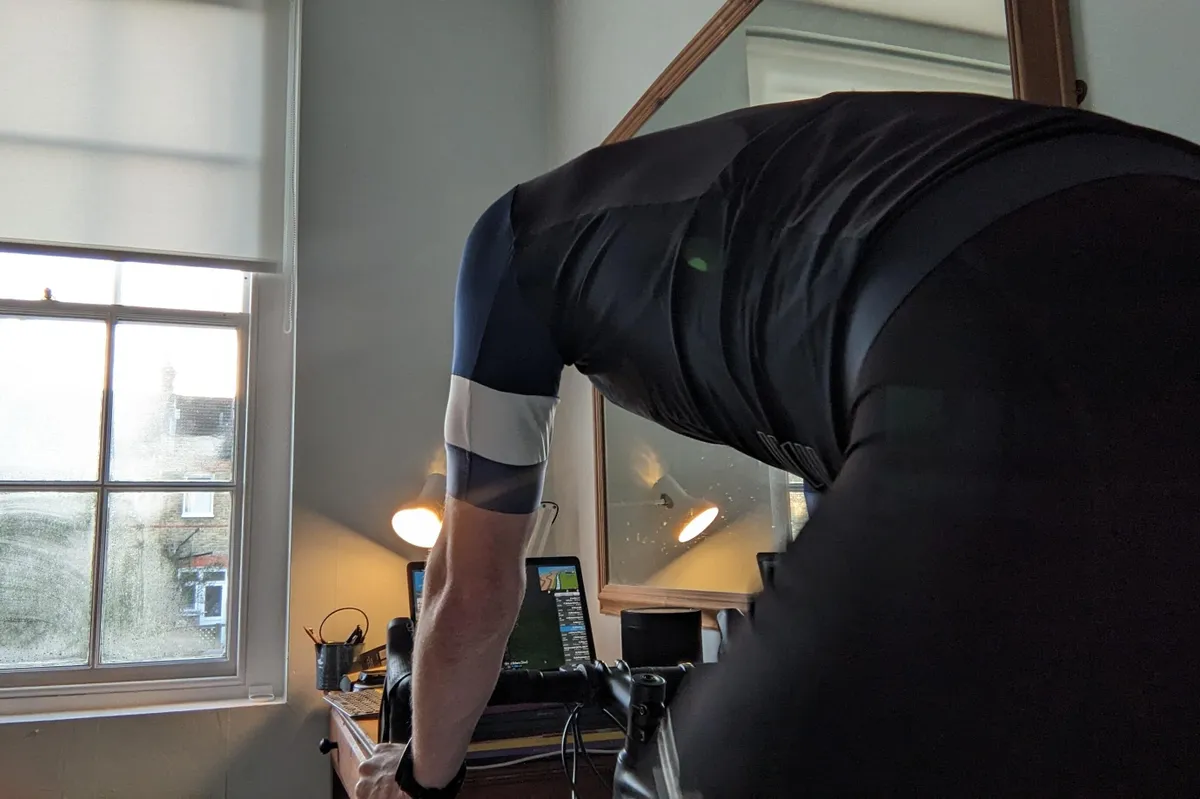
Right, that’s the basics covered, Now, without further ado, it’s time to switch on a fan, saddle up and get ready to sweat as we put our three contenders to the test.
Through the course of the test, we compared the three apps in nine key areas, delivering a verdict on the ‘best’ app in each area, before summing up where each app excels.
- Virtual worlds
- Gamification
- Training
- Multiplayer & social
- Competition
- Other features
- User experience
- Platforms
- Price
- Which app is best for you?
Virtual worlds
Historically, indoor training sessions involved setting up your turbo in front of a TV if you wanted any distractions.
Today’s training apps provide a much more immersive experience and simplify the process, combining on-screen prompts with, in the case of Zwift and Wahoo X, an entertaining riding experience all on one screen.
Both Zwift and Wahoo X (in its Wahoo RGT app) have virtual worlds to explore, while Wahoo SYSTM has a large back catalogue of original and licensed cycling films to watch as you complete a workout.
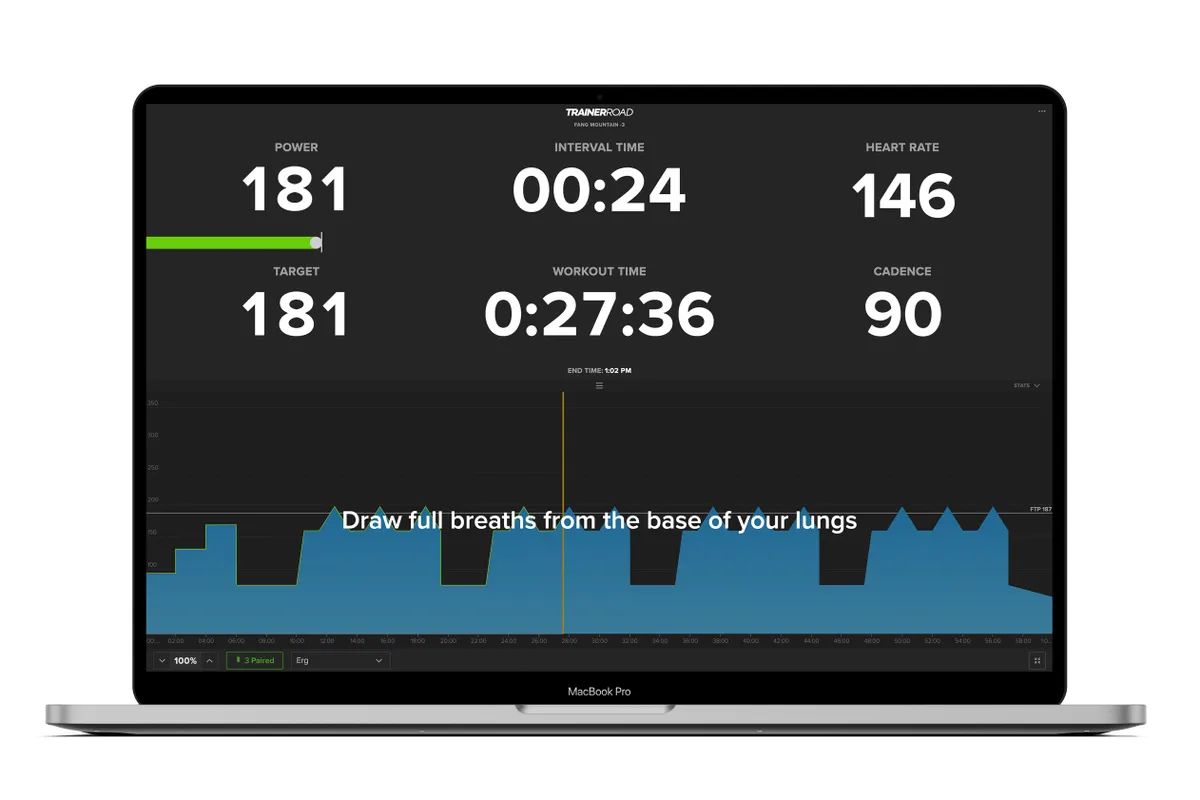
TrainerRoad doesn’t provide any mid-ride ‘content’, but can be minimised so that you can use another third-party app (such as an on-demand streaming service or even Zwift or Wahoo RGT) while following its workout.
Although both Zwift and Wahoo RGT offer up a simulated indoor-riding experience, they are quite different in style and depth.

Zwift has 11 different worlds to choose from and hundreds of miles of virtual roads and routes.
- Watopia
- Yorkshire
- Richmond
- London
- Innsbruck
- New York
- France
- Paris
- Makuri Islands
- Crit City (events only)
- Bologna (events only)

Its environments aren’t the most realistic (one route will see you ride around the inside of a volcano), and we'll cover this more when we talk through Zwift’s increased focus on gamification.
However, it does simulate some real-world climbs, such as Mont Ventoux and Alpe d’Huez (or Ven-Top and Alpe d’Zwift as the virtual recreations are known in the game).

Wahoo RGT, meanwhile, offers 13 different virtual routes, and each is designed to be a realistic recreation of an IRL course (whether that’s a Canary Wharf crit circuit or its own take on Ventoux).
- Dunoon Crossover
- Leuven City
- Iron Horse
- Dirty Reiver
- De Reonde
- Borrego Springs
- Canary Wharf
- Cap de Formentor
- Mont Ventoux
- Paterberg
- Pienza
- Stelvio
- Tempelhof Airport
While it’s certainly more life-like than Zwift, it can be a somewhat lonely experience, with the sparseness of your surroundings amplified by the small number of riders spinning around compared to what you’d find on Zwift.
That aside, Wahoo RGT's Magic Roads feature allows users to upload a GPX file of any route, which is then turned into a virtual course to ride – a useful feature if training for a specific ride, climb or event.
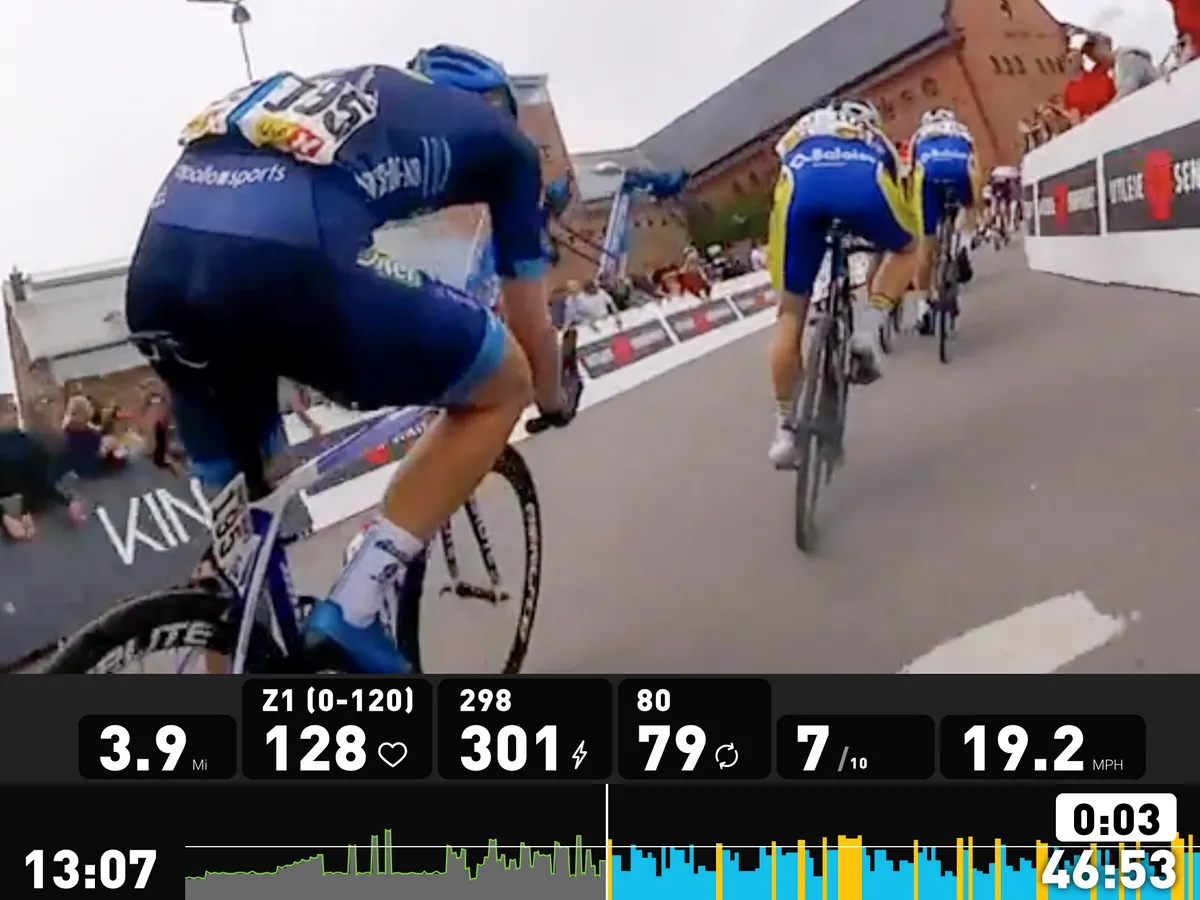
Finally, it’s worth mentioning the content on offer on Wahoo SYSTM. It has seven different ‘channels’ to choose from, which pair workouts with everything from documentaries to on-board footage from the WorldTour.
On all the Sufferfest workouts we completed during testing, the background films felt quite gimmicky; real-world cycling clips were interspersed with clichéd stock footage, while the ‘funny’ tone of its motivational messaging soon started to grate.
We’d rather have watched or listened to something else, but weren’t able to switch off completely for fear of missing a prompt about an upcoming interval.
Winner – Zwift: Although you have to take the worlds with a pinch of salt, the wealth of routes on offer means you rarely have to ride the same piece of virtual tarmac twice.
Gamification
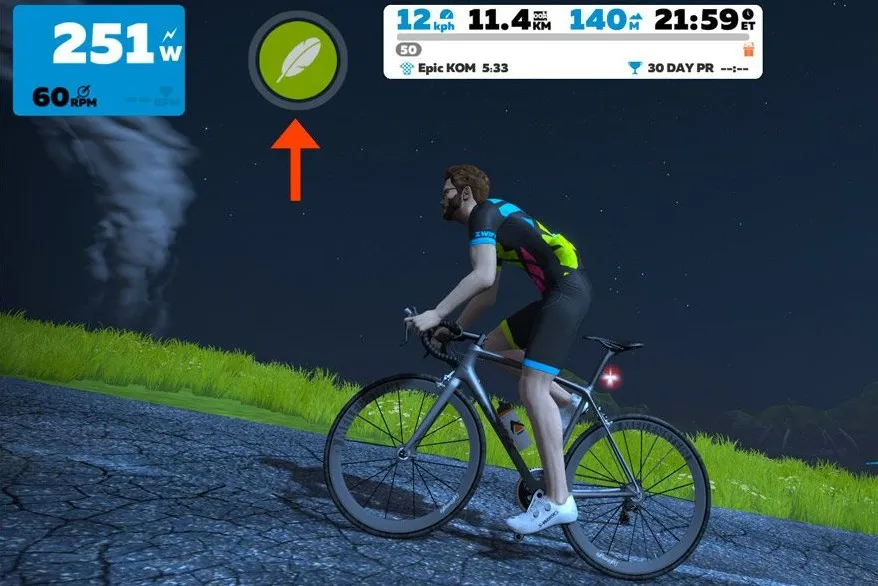
One of the biggest benefits of training apps is how they’ve gamified indoor riding, with Zwift leading the way. Gamification exists to provide riders with additional motivation while riding.
On Zwift, riders are able to access temporary in-game ‘PowerUps’ (such as drag reduction or boosted drafting) to use while riding. You can unlock new features (such as routes and clothing) by accumulating XP (experience points) and levelling up through riding, doing workouts, taking on events and completing challenges.
You can also earn ‘Drops’, which effectively equate to sweat drops gained through burning calories, climbing and so on. These can be exchanged for upgrades to your virtual bike or wheels.
In short, beyond the virtual road on which you’re riding, there’s a lot happening on-screen to occupy the mind, if that gamified experience is important to your motivation levels.
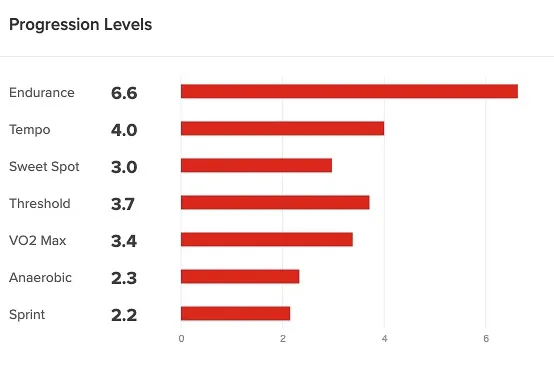
While it’s not as explicit as earning prizes and points, TrainerRoad includes a feature called ‘Progression Levels’.
Essentially an overview of your physical abilities, your progression levels are broken down into a range of seven zones (from endurance and tempo through to anaerobic and sprint).
Each workout completed has a knock-on effect on your progression levels, and, in our experience, it provided added incentive to work on any weaknesses, which are highlighted by lower levels.
Wahoo X, meanwhile, prides itself on not having any gamified gimmicks, so you’re best off looking elsewhere if you need some added motivation to train.
Winner – Zwift: The platform turned indoor cycling into a game and it’s hard to beat those added endorphins when you level up, though some riders may prefer the stripped-back experience offered by TrainerRoad and Wahoo X.
Training

Scratch beneath the surface and, ultimately, the whole point of Zwift, Wahoo X and TrainerRoad is to provide a platform for indoor training, and each has a solid collection of training plans and individual workout sessions.
Zwift’s training plans are fairly expansive (covering everything from your first century ride through to TT tune-ups), although it’s not possible to create a fully custom plan.
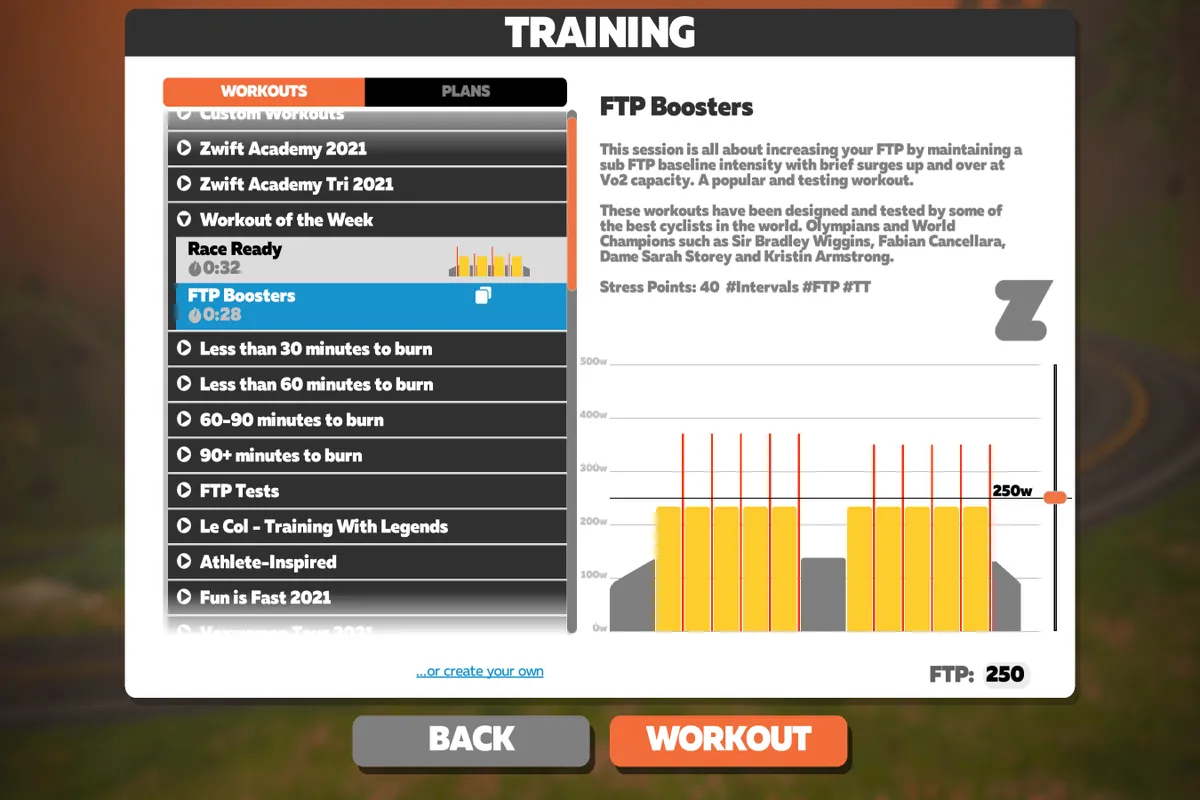
Searching for individual workouts isn’t very user-friendly either, but its suggested ‘workout of the week’ is a useful way to add some purpose to an indoor training session if you’re between plans.
Workouts are based on your Functional Threshold Power (FTP) zones, and to get the most out of it, it’s important to conduct an FTP test on Zwift if you don’t know your threshold or haven’t tested it for a while.
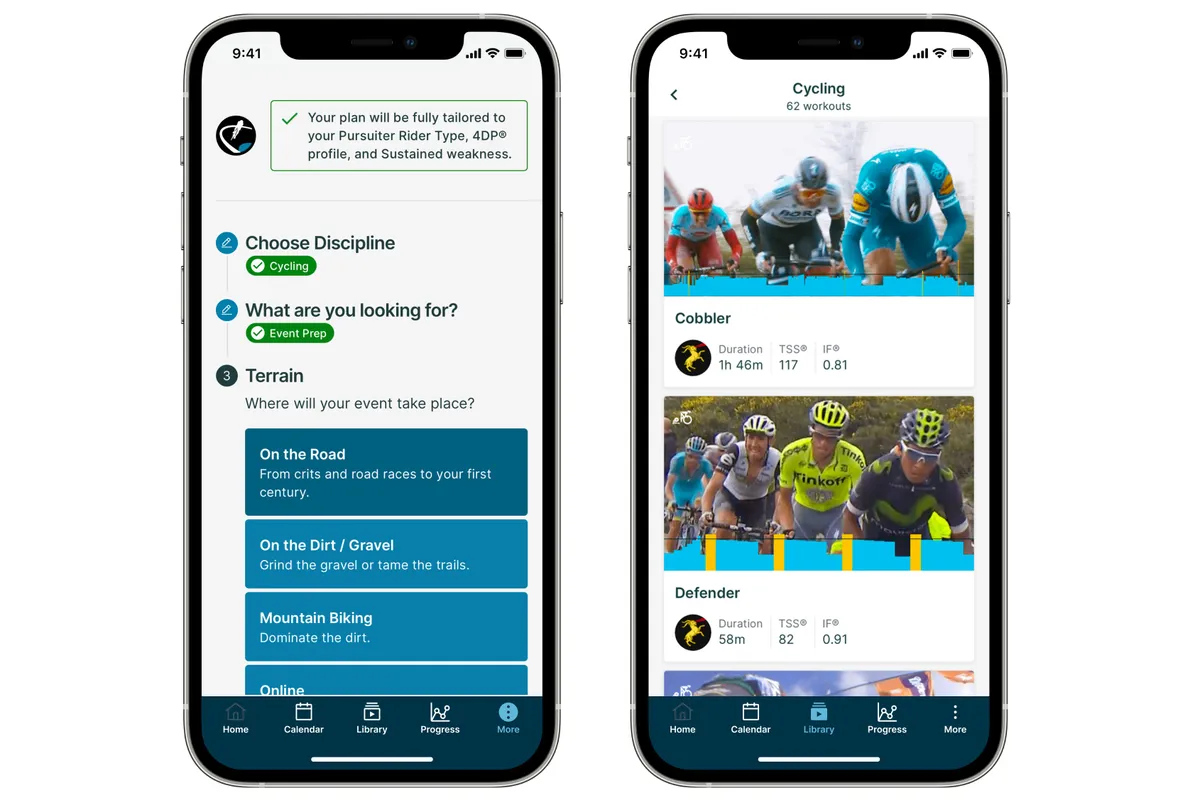
While there is a library of workouts on Wahoo RGT, the SYSTM app is where you’ll find the bulk of Wahoo X’s training plans and workouts.
Unlike Zwift, it’s possible to create a tailor-made training plan depending on your discipline and requirements (whether that’s a 100-mile sportive or an enduro MTB season).
All you have to do is tell Wahoo X what you want to achieve, and it’ll build a plan for you. It’s also easy to find one-off workouts such as a tempo or VO2 max session.

Unlike Zwift and TrainerRoad, interval intensities are set using your ‘4DP’ – a test that works out your Neuromuscular Power (NM), Maximal Aerobic Power (MAP), Functional Threshold Power (FTP) and Anaerobic Capacity (AC).
The idea is that a 20-minute effort (FTP test) uses a different energy system to your five-second max, so why not test and train each system more accurately? One thing’s for sure, the 4DP test is gruelling – we've been in the hurt locker to prove it – so be prepared to be put through the wringer.
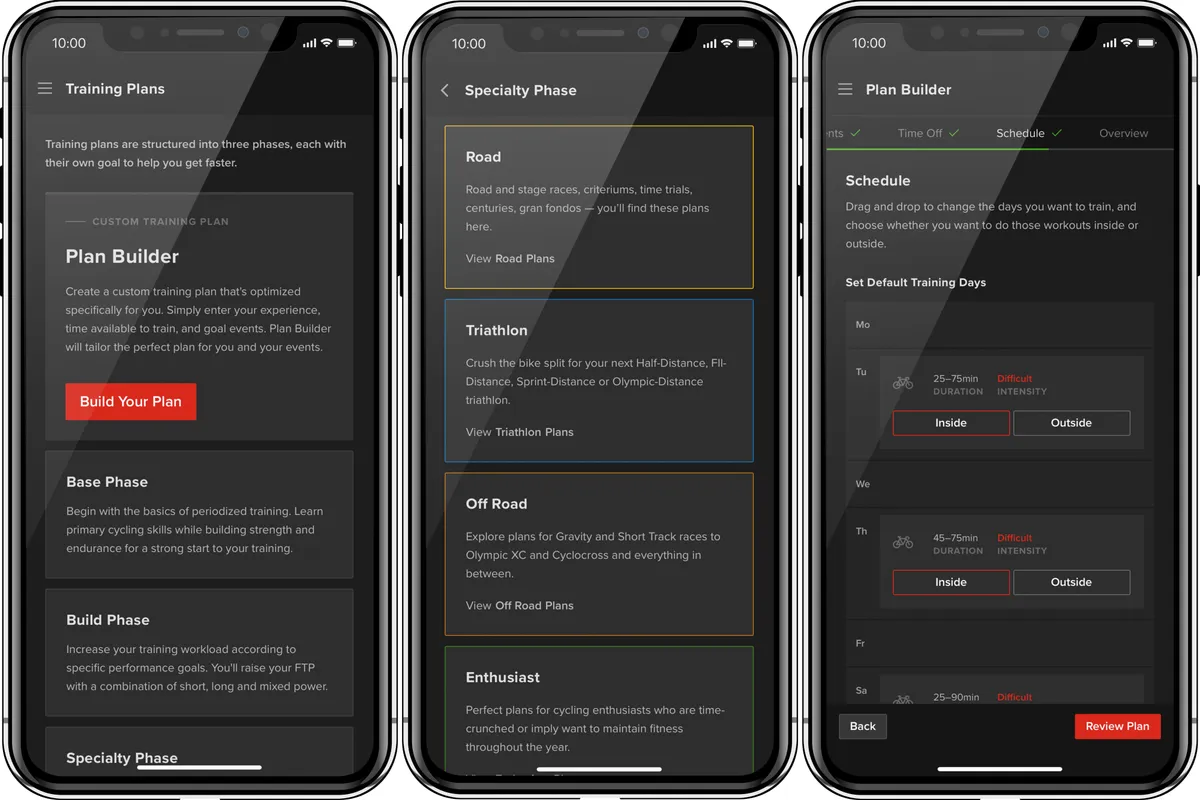
Like Zwift, TrainerRoad uses your FTP to calculate intensity levels.
Meanwhile, in a similar fashion to Wahoo SYSTM, it’s possible to get really specific about your goals or events (and even add minor races or rides along the way that you’re using to build to the main event), in order for TrainerRoad to produce a custom training plan for you.
This will factor in a range of criteria, including how long you have to train.
Beyond this, where TrainerRoad differs is in how it uses AI to adjust a plan as you’re progressing.
Struggle with a session and it will adapt future workouts to factor this in. Breeze through some hard efforts and it will notice you’re ready for something more challenging next time.
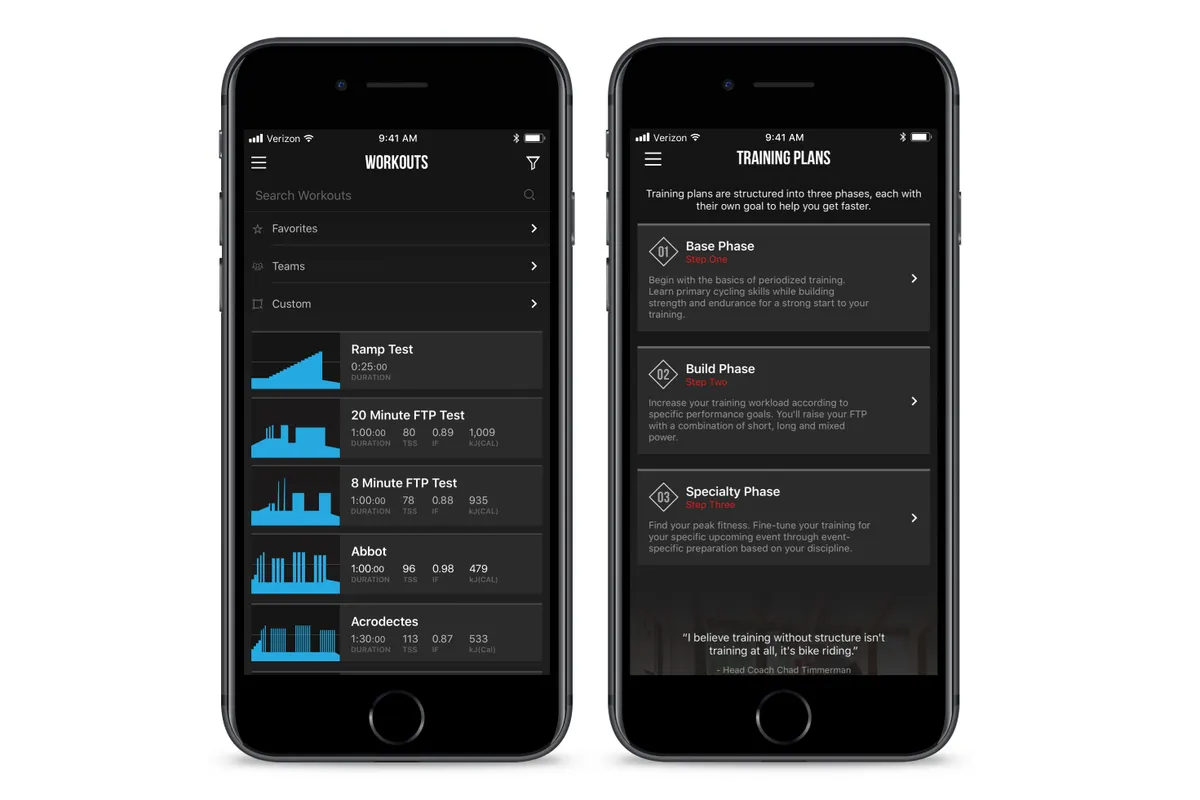
In my experience, TrainerRoad also makes it really easy to find a specific workout if you want a one-off session.
All you have to do is select the ‘workouts’ tab and you can filter by duration, zone (i.e. endurance or threshold) and difficulty – handy if you’ve got less than 45 minutes but still want to follow, say, a structured anaerobic drill.
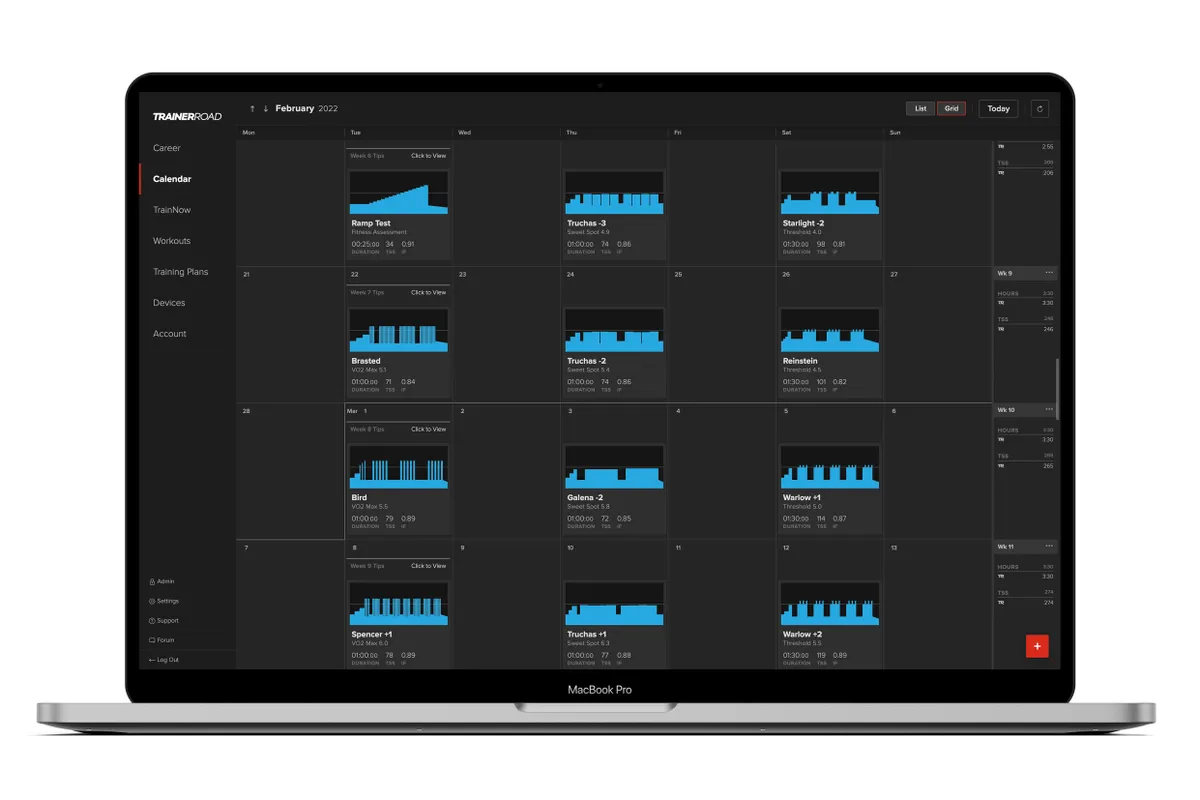
TrainerRoad also has a trick up its sleeve in the form of AI FTP detection – complete 10 workouts and it will use your data to determine your FTP, consigning those physically and mentally difficult tests to the past, but still keeping the training intensity up-to-date with your current fitness levels
Finally, if you have a smart direct-drive turbo trainer, all three apps utilise ERG mode to help take the thinking out of a workout – you simply have to keep turning the pedals as the resistance is automatically changed depending on the interval intensity.
During testing, all performed similarly in terms of effectiveness and the user experiences were all fairly similar.
Winner – TrainerRoad: The app’s main focus is on training and it more than delivers, while its AI-based analysis means it also doubles up as a coach.
Multiplayer & social
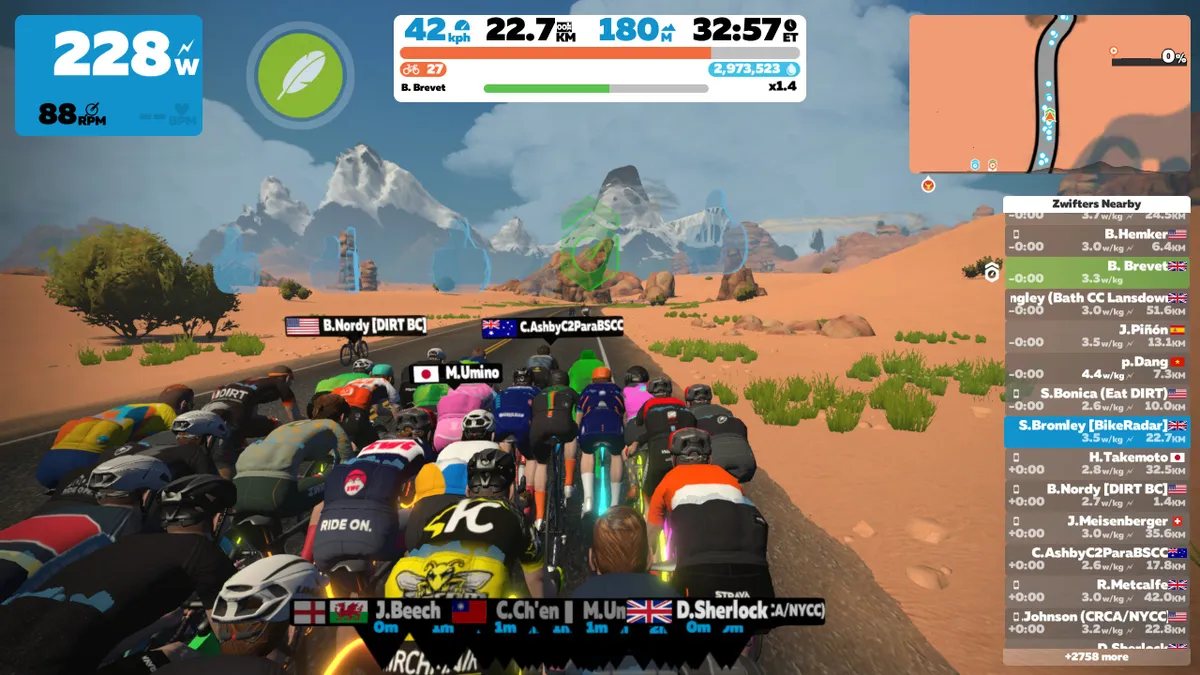
Training indoors can be a solitary experience, which is why most training apps try to build a social element into the equation. Some offer up the chance to complete a workout with friends, similar to a spin class, while others have enabled the creation of virtual cycling clubs.
One of Zwift’s key features is its social side. Not only do you see hundreds of other avatars spinning around its numerous worlds whenever you log on, but the chat function means you can strike up a conversation with anyone by using a keyboard, or even throw some kudos (‘RideOns’ in Zwift-speak) their way. Zwift continues to build out its social functionality, including the recent addition of a Discord chat link.
It doesn’t end there, either. Zwift has a jam-packed schedule of group rides, workouts and events at all hours of the day, while it has thousands of clubs that anyone is free to join.
Each will organise rides of their own, and some may even have dedicated Zwift racing teams for those who want to get competitive.

Wahoo RGT is where you’ll find Wahoo X’s social offering, and it matches its Zwift rival in terms of chat functions, events and races.
Where it falls down is its lack of users – during one test ride on its Dirty Reiver course, I only came across one other real rider, with most of the other avatars the app’s pace bots. Wahoo RGT’s worlds are eerily quiet compared to those on Zwift, making it harder to feel part of an online community.
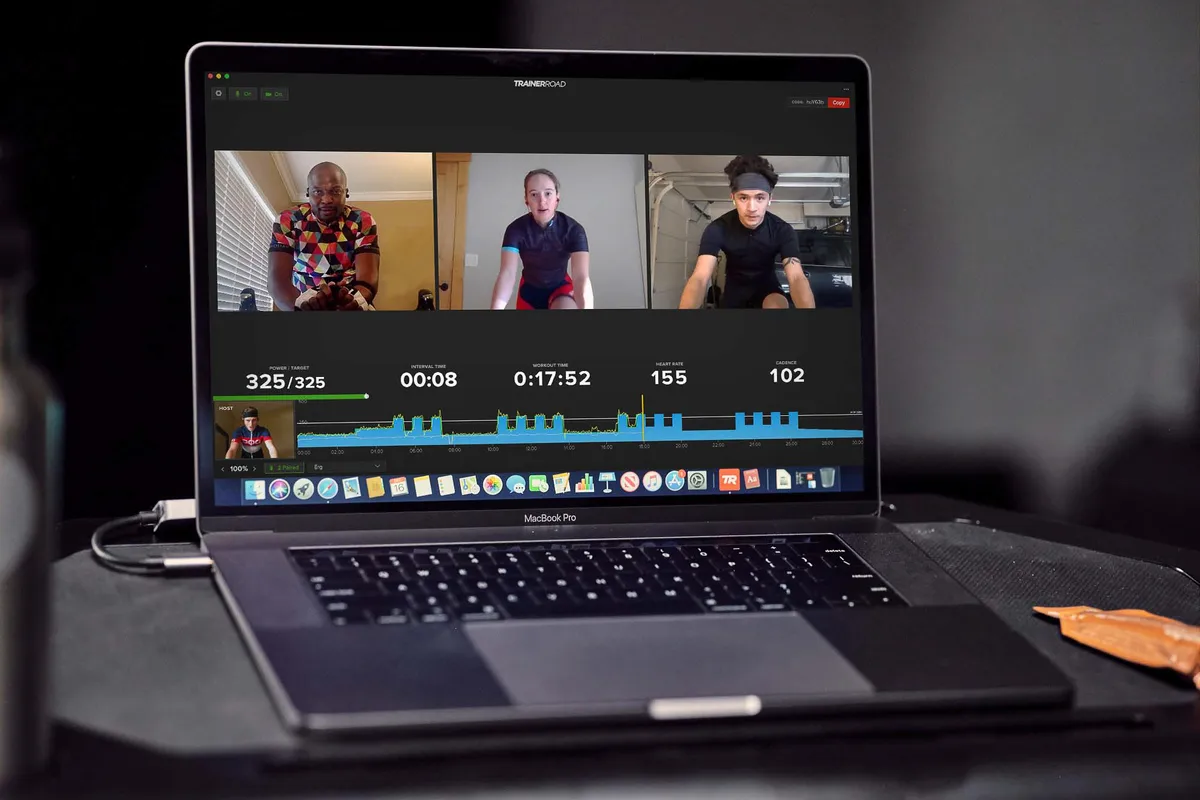
While it doesn’t have a virtual peloton you can join, TrainerRoad enables users to create and join group rides with other users.
Similar to a spin class, you all take on the same workout, but by using a computer’s webcam and microphone, you’re able to get a sense of togetherness that's hard to recreate at home.
Winner – Zwift: Its thousands of users and clubs mean that whatever the time of day, you’ll be able to find a group of like-minded people to ride with indoors, while Zwift’s focus on the social side of training is also evident in its functionality.
Competition
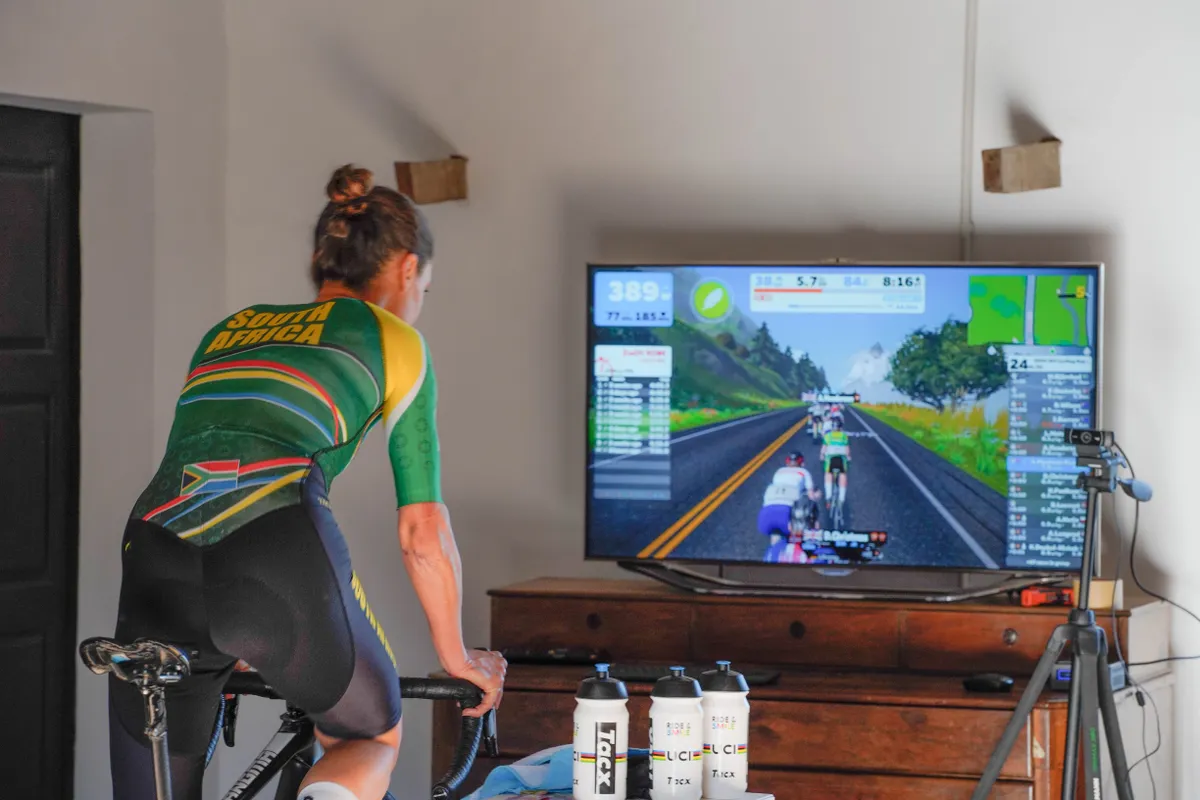
Virtual competition is a key part of many apps and there are even eSports UCI World Championship rainbow jerseys on the line for the strongest riders.
Both Zwift and Wahoo RGT offer the chance to duke it out against others, but there are some subtle differences to the racing mechanics.
Racing on Zwift is generally an all-out slog and you’ll often find yourself in the red from the off just to stay with the rest of the pack.
If you can hold on, it then becomes about conserving your energy, responding to breaks and, from a tactical point of view, using your PowerUps wisely.
Beyond bunch races, Zwift's race formats include chase races, time trials, team time trials and 'sprint' races.
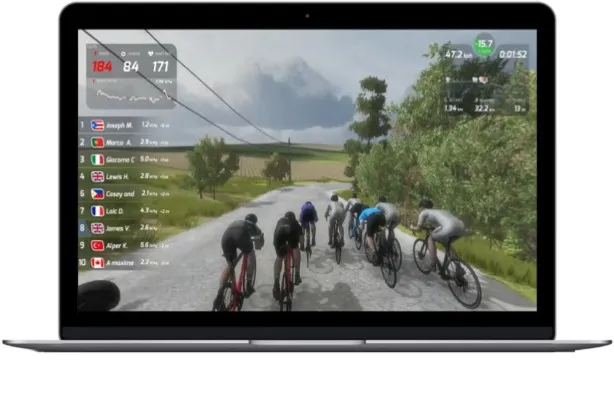
Wahoo RGT, meanwhile, champions its more ‘realistic’ racing experience, with race, time trial and elimination options.
It has an automatic braking feature for ‘collision avoidance’ – essentially, to overtake someone, you need to be putting out significantly more power, rather than just sitting on their wheel. It also simulates braking when entering corners, giving you the chance to employ tactics and strategies out of turns like in real-life racing.
In terms of events, Zwift racing has an awful lot more on offer. For example, on firing up the app during testing, there were five races starting within the next hour, while there are numerous leagues and competitions to enter.
It also has multiple categories for events based on watts-per-kg, pairing you with riders of a similar ability.

Outside of racing, Zwift also has a competitive element baked into its general free riding. As you spin around, you’ll come across sprint and climbing segments (similar to those found on Strava), and it’s hard to resist ramping up the effort.
An on-screen leaderboard shows how you’re faring against that day’s best, while it’s possible to go head-to-head against a ‘ghost’ version of yourself – a translucent replay of your 90-day PB, most recent effort, or both.
TrainerRoad doesn’t have a competitive angle.
Winner – Zwift: While it prioritises power over panache, the wealth of racing on offer leaves Zwift at the top of the pile.
Other features

Main features ticked off, each of the training apps have a number of tricks up their sleeves that help justify their subscription fees.
Also into running? You’ll be able to pound the pavement in Watopia with a Zwift subscription, but it does require you to own a treadmill.
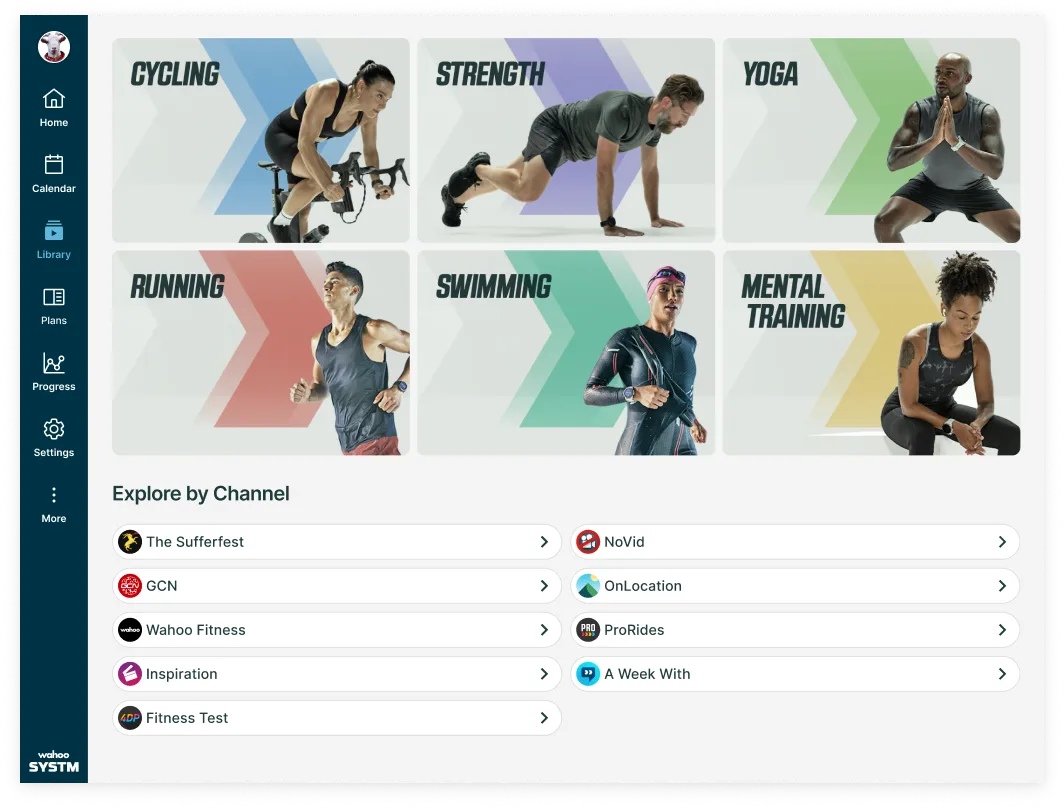
If there’s only room for one training tool in your life, but you still want to add some cross-training to your workout routine, then Wahoo SYSTM has you sorted.
The app's running, swimming, strength and mobility, and yoga sessions can add another dimension to your training, although they can’t currently be synced with a multi-sport smartwatch (meaning you have to write them down or create your own custom workout).

Another feature that both Wahoo SYSTM and TrainerRoad allow is for you to sync an indoor workout to a head unit and complete it outside instead.
One thing to flag is that SYSTM only works nicely with Wahoo Elemnt head units and there isn’t a simple way of getting outdoor workouts onto rival devices yet.
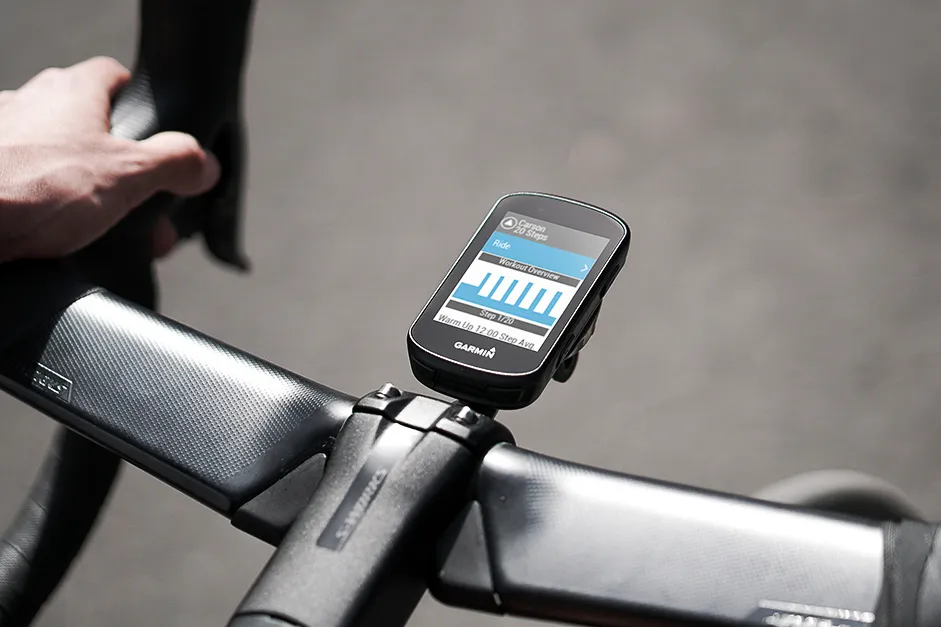
Both Wahoo SYSTM and TrainerRoad also enable you to log outdoor rides on the platform, so you can use them as a training log that doesn’t focus exclusively on indoor cycling, providing a more rounded view of your effort (although once again, Wahoo will only sync outdoor sessions from Wahoo Elemnt devices).
Winner – Wahoo X: Wahoo’s extra features for multi-sport athletes mean it provides an extremely well-rounded offering that goes above and beyond indoor cycling.
User experience
One of indoor cycling’s biggest benefits is its convenience. Once you’ve sorted out your setup, it should theoretically only take a few moments to get started with a training session.
In reality, though, the user experience of a training app can determine the length of time it takes you to start spinning.
We've found Zwift similar to firing up a streaming app such as Netflix. If not following a dedicated plan, there is almost too much choice when it comes to riding locations, workouts and events. It’s easy to find yourself paralysed by choice, adding time before the pedals are turning. (The 'Zwift for you' dashboard, currently being rolled out, may also help provide some focus to Zwift's content – ed.)
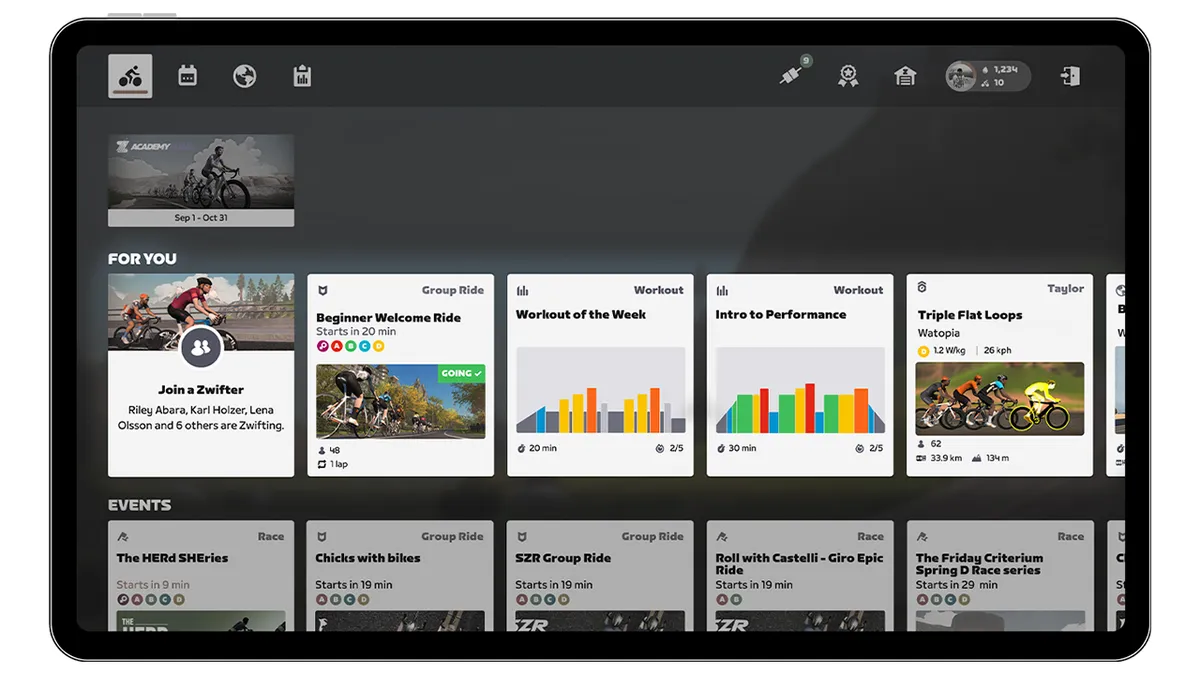
However, the biggest bugbear in testing came through the requirement for a second app (the Zwift Companion app) to make the most of the game’s features – including chatting, changing direction on your route, using PowerUps and signing up for club events.
Indoor training is supposed to be simple, but adding a second screen into the equation unnecessarily complicates things.
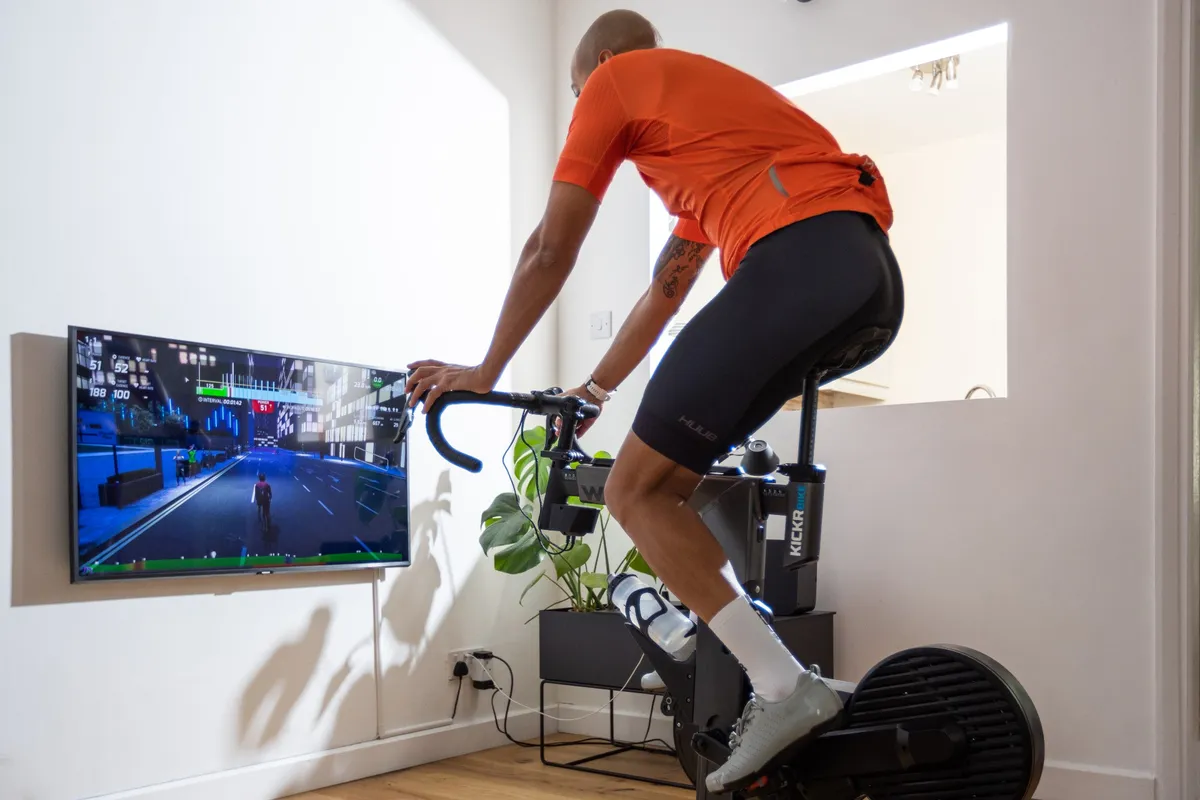
Wahoo X is slightly easier to navigate than Zwift, but its biggest downfall is that it’s split between two apps – and the two don’t seem to talk to each other. For example, Wahoo SYSTM workouts can’t be completed on Wahoo RGT, while rides in Wahoo RGT don’t show up in the recent activity (‘progress’) section of Wahoo SYSTM.
Wahoo says there aren’t any plans to update this at present, with Wahoo RGT and Wahoo SYSTM acting as two different apps.

TrainerRoad’s user experience leads the way through its simplicity. On opening the app, you can see what workout is scheduled that day, regardless of whether you are following a training plan (aka ‘career’) or finding something else to do using the easy-to-filter ‘workouts’ tab.
Winner – TrainerRoad: Clean, easy to navigate and with no need for a second app, TrainerRoad keeps it simple and gets you riding in no time.
Platforms
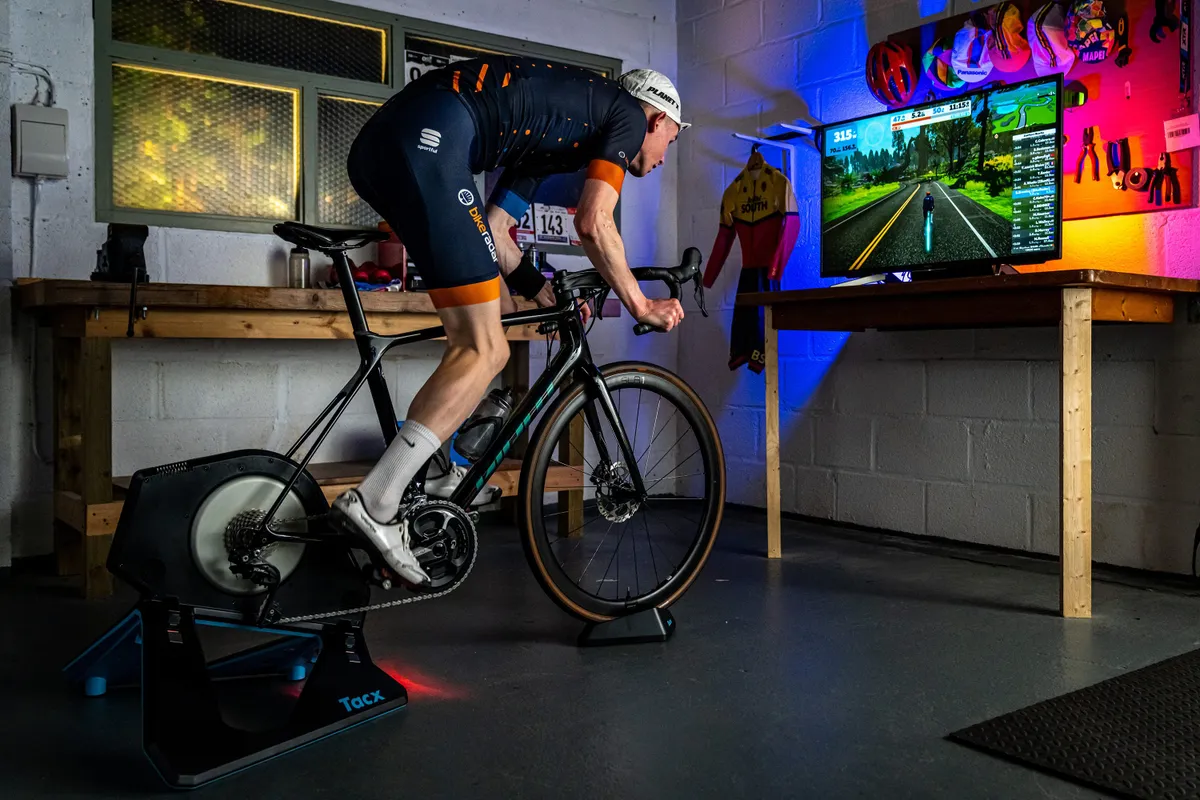
At their most basic, all of the training apps can be used with a classic, wheel-on turbo trainer with a speed sensor, but to get the most out of them, it’s worth using a smart direct-drive turbo trainer and heart rate monitor.
They are all compatible with the major operating system platforms (iOS, Android, Mac and Windows), while Zwift can also be used on Apple TV.
Winner – Zwift: There's not much between them here, but Zwift just about edges it because of its compatibility with Apple TV.
Price
When compared to a gym membership or the cost of a cycling coach, training apps start to look incredibly good value for money.
Yes, there is an initial outlay to buy a turbo/smart trainer, but with the most expensive subscription topping out at $19.95 per month (less than £17 at today’s exchange rate), a training app works out cheaper than the cost of a weekly mid-ride café stop.
Below is a breakdown of each app’s current subscription costs, with most offering the ability to try before you buy and discounts for signing up long-term.
- Zwift: £12.99 per month after a free 14-day trial
- Wahoo X: $14.99 per month/$149 per year (equivalent to $12.42 per month) after a free 14-day trial, although Wahoo RGT does also have a free version with fewer features
- TrainerRoad: $19.95 per month/$189 per year (equivalent to $15.75 per month) after a free 30-day trial
Winner – Wahoo X: Not only does an annual subscription make it the cheapest training app around, but you also get access to two different programmes – the training-focused Wahoo SYSTM and the virtual worlds of Wahoo RGT.
Verdict – so which app is right for you?

The world of indoor training has come on leaps and bounds over the last decade, and the training apps on offer can leave you with pro-level training tools in the comfort of your home for a relatively small monthly fee.
But which app is right for you? As with many things in cycling, it depends on what you’re after – and what best suits your riding and training goals – but let me point you in the right direction.
If you’re someone who wants to liven up their indoor training, then it’s hard to look beyond Zwift. Not only do its numerous worlds provide a welcome distraction from slogging away for hours on end, but its chat, group and club functions have brought a social side to what was once a solitary activity.
There’s also plenty of gamification to keep the mind occupied, a regular schedule of busy events and the option to go virtual racing.
However, while they tick a lot of boxes for riders looking for a simple entry point into structured training, Zwift’s training plans are limited if you’re looking for a truly bespoke programme. You’ll be better off looking elsewhere if you have a specific goal (or series of more complex goals) in mind.
Wahoo X might be this place. What it lacks in distractions (both its SYSTM films and Wahoo RGT routes fail to match the immersive capabilities of Zwift), its training plans and workouts provide a seriously impressive suite of tools. This is especially true when you add in its multi-sport sessions such as running, swimming and yoga – and the ability to take your training outdoors on the bike.
The most serious and in-depth training tool of them all, though, is comfortably TrainerRoad. Using it felt like having a dedicated coach on tap who was not only providing a completely custom training plan, but was adapting it as we progressed, to ensure we stayed right on track.
While it doesn’t have any virtual worlds or background films, its science-led AI features make it one of the smartest pieces of kit out there, with a loyal band of users who want to focus on training, not chasing an avatar.

